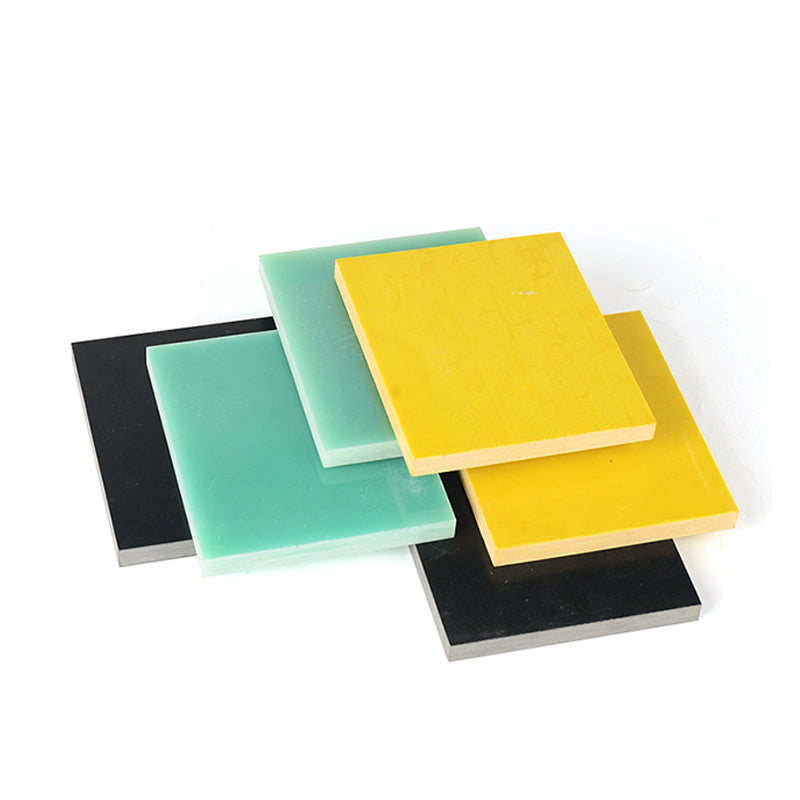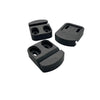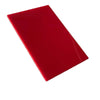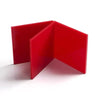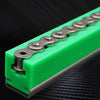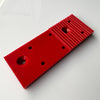The CNC Machining Process for PTFE
Understanding the CNC machining process for PTFE (Polytetrafluoroethylene) is crucial for product designers and engineers who seek precision and quality in their components. This section explores the intricacies of machining PTFE, focusing on the techniques and tools that are essential in achieving the desired outcomes.
Key Aspects of Machining PTFE
Material Preparation
Before delving into the machining process, it's important to understand the preparation of PTFE. PTFE is known for its softness and flexibility, which can pose challenges during machining. Preparing the material properly, including ensuring it is free from impurities and defects, is crucial for a successful machining process.
CNC Machining Techniques for PTFE
CNC (Computer Numerical Control) machining for PTFE involves a series of controlled, precise movements and operations. Unlike harder materials, PTFE requires specific adjustments in terms of feed rate, cutting speed, and depth of cut to avoid material deformation and to achieve the desired accuracy.
Tools Used in PTFE Machining
Selecting the Right Cutting Tools
The selection of cutting tools is vital in PTFE machining. Tools made from materials like high-speed steel or carbide are commonly used. These tools must be sharp and well-maintained to ensure clean cuts and to prevent material from sticking to the tool edges.
Tool Path and Speed
Programming the correct tool path and speed is essential in CNC machining of PTFE. The tool path must be optimized to minimize tool wear and to ensure uniform material removal. The speed settings should be adjusted to prevent excessive heat buildup, which can alter the properties of PTFE.
Achieving Precision and Quality
Monitoring and Adjustments
Continuous monitoring and adjustments during the machining process are key to achieving precision. Due to PTFE's sensitivity to heat and pressure, real-time adjustments may be necessary to maintain the integrity of the material and the accuracy of the part.
Finishing Techniques
After the primary machining, finishing techniques such as sanding or polishing may be employed to achieve the desired surface finish. These techniques are carefully applied to enhance the aesthetic and functional qualities of the CNC machined PTFE part.
The CNC machining process for PTFE is a delicate balance of art and science. It requires a deep understanding of the material's properties, the right selection of tools and techniques, and a meticulous approach to achieve the high precision and quality demanded in modern product design. As technology advances, the potential for even more innovative applications of CNC machined PTFE continues to grow, opening new horizons in the field of product design and engineering.

Design Considerations with CNC Machined PTFE
When working with CNC machined PTFE parts, product designers must navigate a range of considerations to ensure the final product meets the required specifications and performance standards. This section focuses on key aspects such as tolerances, design complexity, and material behavior, which are critical in the successful integration of PTFE components in product design.
Understanding Tolerances in PTFE Machining
Importance of Precision
Tolerances are crucial in CNC machining, especially with materials like PTFE. Due to its inherent flexibility and softness, PTFE can behave differently under machining stresses compared to harder materials. Designers must specify tolerances that are realistic and achievable, considering the material's nature.
Achieving Tight Tolerances
To achieve tight tolerances with PTFE, it's essential to use advanced CNC machines capable of precise movements and cuts. The machining environment should be controlled to minimize factors that could affect the accuracy, such as temperature fluctuations.
Navigating Design Complexity
Balancing Design and Material Limitations
When designing parts to be machined from PTFE, one must balance the desired design complexity with the material's limitations. Complex designs may require innovative machining strategies or multi-step processes to realize intricate features without compromising the material's integrity.
Integrating Functional and Aesthetic Aspects
Designers should also consider how the functional requirements align with aesthetic goals. PTFE offers a unique blend of properties that can enhance both the performance and appearance of a product, but this requires careful planning to optimize.
Material Behavior and Its Implications
Thermal Expansion and Contraction
PTFE is subject to thermal expansion and contraction, more so than many other plastics. Designers must account for these changes in their designs, especially for parts that will experience temperature variations in their application.
Stress Relaxation
Another aspect to consider is stress relaxation in PTFE. Over time, PTFE can deform under constant load, which might affect the fit and functionality of the part. This behavior should be factored into the design, particularly for load-bearing components.
Designing with CNC machined PTFE parts requires a deep understanding of the material's properties and behavior. By carefully considering tolerances, design complexity, and material behavior, product designers can effectively harness the benefits of PTFE, creating components that are not only functional but also aesthetically pleasing. This thoughtful approach to design ensures that the final products stand out in terms of quality, performance, and innovation.

Innovative Applications of CNC Machined PTFE in Product Design
The versatility of CNC machined PTFE parts has led to their innovative use in various fields of product design. This section highlights some of the most creative and impactful applications, showcasing how PTFE's unique properties can be harnessed in real-world scenarios.
PTFE in Aerospace and Aviation
High-Performance Components
In the aerospace and aviation industry, the reliability and performance of each component are critical. CNC machined PTFE parts are extensively used in this sector due to their high heat resistance and low friction properties. For instance, PTFE is used in the manufacture of seals and gaskets that can withstand extreme temperatures and pressure variations, ensuring the safety and efficiency of aircraft operations.
Medical Device Innovation
Biocompatibility and Sterilization
The medical field has seen significant advancements with the integration of PTFE in device design. PTFE's biocompatibility makes it safe for use in medical devices, while its resistance to sterilization processes ensures longevity and hygiene. An example is the use of CNC machined PTFE in prosthetic devices, where its lightweight and non-reactive nature improve patient comfort and device durability.
Automotive Industry Applications
Enhancing Performance and Durability
In the automotive industry, PTFE parts are used to enhance performance and durability. Components like bushings and bearings benefit from PTFE's low friction coefficient, reducing wear and improving the lifespan of these parts. This application is crucial in high-performance vehicles where precision and durability are paramount.
Electronics and Electrical Engineering
Insulation and Protection
PTFE's excellent electrical insulation properties make it a valuable material in electronics and electrical engineering. It is used in the insulation of wiring and as a protective layer in circuit boards. This application is vital in preventing short circuits and ensuring the longevity of electronic devices.
Food Industry Utilization
Non-Stick and Chemical Resistance
In the food industry, PTFE's non-stick properties and chemical resistance make it an ideal material for machinery components that come into contact with food products. For example, CNC machined PTFE is used in the production of molds and conveyor parts, ensuring easy cleaning and maintenance, and preventing contamination.
The innovative applications of CNC machined PTFE in product design are a testament to the material's versatility and effectiveness across various industries. From aerospace to medical devices, automotive, electronics, and the food industry, PTFE continues to play a pivotal role in advancing technology and improving the quality of products. As designers and engineers continue to explore the potential of PTFE, its impact on product design and innovation is bound to grow even further.

Balancing Aesthetics and Functionality in PTFE Machining
The challenge of balancing aesthetic appeal with functional performance is a key aspect of product design, especially when working with CNC machined PTFE parts. This section explores how designers can optimize both aspects to create products that are not only high-performing but also visually appealing.
Understanding the Aesthetic Potential of PTFE
Visual Appeal in Design
While PTFE is often chosen for its functional properties, its aesthetic potential should not be overlooked. PTFE can be finished to a high degree of smoothness, offering a clean and professional look. Additionally, it can be pigmented during the manufacturing process, allowing for a range of color options to match design aesthetics.
Functional Performance: The Core of PTFE
Leveraging PTFE's Unique Properties
The functional performance of PTFE is rooted in its unique properties, such as chemical resistance, low friction, and high-temperature tolerance. In product design, these properties can be leveraged to enhance the functionality of components, such as in creating durable, low-maintenance parts that operate smoothly under various conditions.
Integrating Aesthetics and Functionality
Design Strategies
To effectively balance aesthetics and functionality, designers should consider the end-use of the product and the environment in which it will operate. For instance, in consumer products where appearance is crucial, the surface finish and color of PTFE parts can be tailored to complement the overall design. In industrial applications, the focus might be more on the material's durability and performance, but aesthetic considerations can still play a role in creating a cohesive and branded look.
Collaboration Between Design and Engineering
Achieving this balance often requires close collaboration between designers and engineers. Designers bring a creative perspective, focusing on the look and feel of the product, while engineers ensure that the functional aspects are not compromised. This teamwork is essential in optimizing both the aesthetic and functional aspects of CNC machined PTFE parts.
Balancing aesthetics and functionality in PTFE machining is a delicate art that requires a deep understanding of the material's properties and the needs of the end product. By considering both aspects in the design process, product designers can create CNC machined PTFE parts that not only meet performance standards but also resonate with users on a visual and tactile level. This holistic approach to design is what sets apart truly innovative and successful products in today's competitive market.
In conclusion, the journey through the world of CNC machined PTFE parts reveals a landscape where innovation, precision, and design converge. From understanding the unique material properties of PTFE to mastering the intricacies of its machining process, each aspect plays a pivotal role in the creation of high-quality, functional, and aesthetically pleasing products. As we've explored, the applications of PTFE in various industries showcase its versatility and indispensability. Moreover, the delicate balance between aesthetics and functionality in PTFE machining is not just a challenge but an opportunity for designers and engineers to push the boundaries of what's possible. This guide serves as a testament to the endless possibilities that CNC machined PTFE parts offer in the realm of product design, encouraging professionals to continue exploring, innovating, and redefining the standards of excellence in their respective fields.

Ready to Elevate Your Design Game with CNC Machined PTFE Parts?
Don't miss out on the opportunity to transform your projects. Reach out to us now! Fill out the contact form below and let's start a conversation that could redefine the way you design.
🎉🎉🎉Limited Time Offer Use code: QR4GNY08SHVR at checkout and enjoy a special discount on your entire order! 👉 PTFE plastic




